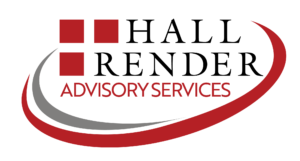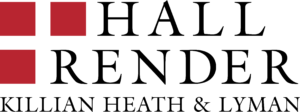On May 21, 2020, Hall Render published “Providers Beware: Avoiding the Pitfalls in Regulatory Flexibilities and Relief Funds.”
On May 26, 2020, OIG published “OIG Strategic Plan: Oversight of COVID-19 Response and Recovery.”
To those who follow health care compliance and enforcement issues closely, the OIG document should come as no surprise. Over the past several months, the federal government has issued dizzying amounts of new regulations, provided waivers to longstanding laws and made large sums of money available to health care entities.
If the past has shown us anything, it has shown us that OIG strongly believes that its “oversight and enforcement activities protect HHS funds from fraud, waste and abuse and promote transparency of, and accountability for, HHS spending.”
Accordingly, when the government has provided large sums of money to the provider community, OIG typically follows with enforcement activities.
OIG Strategic Plan Summary
What is wonderful about OIG’s Strategic Plan document is that they transparently let the health care industry know that, with regard to COVID-19 monies and/or waivers, they are going to:
- Conduct audits and evaluations of HHS’s oversight, management and internal controls for awarding, disbursement and use of funds.
- Audit fund recipients to assess whether they met use, reporting and other requirements, and, where appropriate, recommend recovery of misspent funds.
- Participate in, and coordinate closely with, the Pandemic Response Accountability Committee (“PRAC”) to prevent and detect fraud, waste, abuse and mismanagement, and to mitigate major risks that cut across program and agency boundaries.
Next Steps
Health care entities need to reassess, identify and prioritize their COVID‑19 compliance risks. Preparation could include:
- Creating new training content and providing training regarding these new risk areas to staff, leadership and board members;
- Creating new policies and procedures; and
- Conducting or working with competent third-party partners to conduct audits to evaluate these risks.
The following items can serve as a starting point for auditing and mitigating false claims/billing risks associated with COVID-19 reimbursement.
- Conduct audits of telemedicine services provided prior to and during COVID-19, to determine compliance with regulations. Some of the updated areas that may be audited for appropriate documentation are listed below:
-
- Drug Enforcement Administration allowance of physicians to prescribe opioids to new patients (previously only established patients) via video visit;
- Incident to services by NPPs allowed via video/virtual presence (previously direct supervision in person);
- Distant site (physician location) allowed to be in a physician’s home with updated enrollment (previously not allowed);
- Originating site (patient location) geographic and site restrictions lifted allowing services outside of rural areas and in patient homes; and
- Equipment criteria lifted allowing smartphones and tablets with apps such as FaceTime and Skype as long as audio and visual connection establishes a “two‑way, real-time interactive communication.” Previously, secured, encrypted (128-bit level) connection and archival backup required for HIPAA security.
- Conduct audits of documentation to support appropriate utilization of COVID-19 related ICD-10 diagnosis codes.
- OIG may be specifically looking for documentation to support the utilization of the COVID-19 diagnosis codes and that the coding guidelines set forth by the CDC are followed; and
- Additionally, they may audit the clinical support for the COVID-19 diagnosis codes
- Conduct data analytics to identify providers with high-level E/M visits, as well as to identify increases in overall provider productivity.
- Note: a large percentage of high-level E/M visits is not indicative of wrongdoing; however, entities should be able to explain and evidence why high E/M utilization is not problematic.
- OIG may be looking for over-utilization of visits and higher level of services in order to identify providers that provided these visits without the medical necessity to support the services.
- Additionally, increased utilization of non-physician practitioners (“NPP”) services under the “incident to” guidelines may be audited. Due to the provision that NPPs could provide services “incident to” via telemedicine, there is the potential for this commonly misunderstood guideline to be utilized inappropriately.
In short, COVID-19 changed the health care regulatory landscape and created new compliance risks for physician practices, hospitals, and health systems. The OIG has said that it is going to audit those risks. It is in health care entities’ best interest to be able to demonstrate the existence of robust coding and billing compliance plans, with risk-based auditing and monitoring activities that address not only typical coding and billing risks but also COVID-19 reimbursement related risks.
If you have questions or would like additional information about this topic, please contact:

- Kenneth Zeko at (214) 458-3457 or kzeko@HallRenderAS.com
- Delena Howard at (904) 463-7306 or dhoward@HallRenderAS.com
- Angela Deneweth at (586) 243-9857 or adeneweth@HallRenderAS.com

- Steven Pratt at (317) 977-1442 or spratt@wp.hallrender.com
Hall Render’s attorneys and professionals continue to maintain the most up-to-date information and resources at our COVID-19 Resource page, through our 24/7 COVID‑19 Hotline at (317) 429-3900 or by contacting your regular Hall Render attorney.
Hall Render blog posts and articles are intended for informational purposes only. For ethical reasons, Hall Render attorneys cannot—outside of an attorney-client relationship—answer specific questions that would be legal advice.
